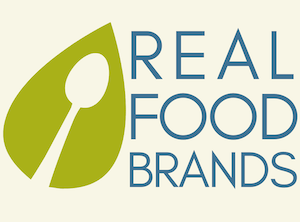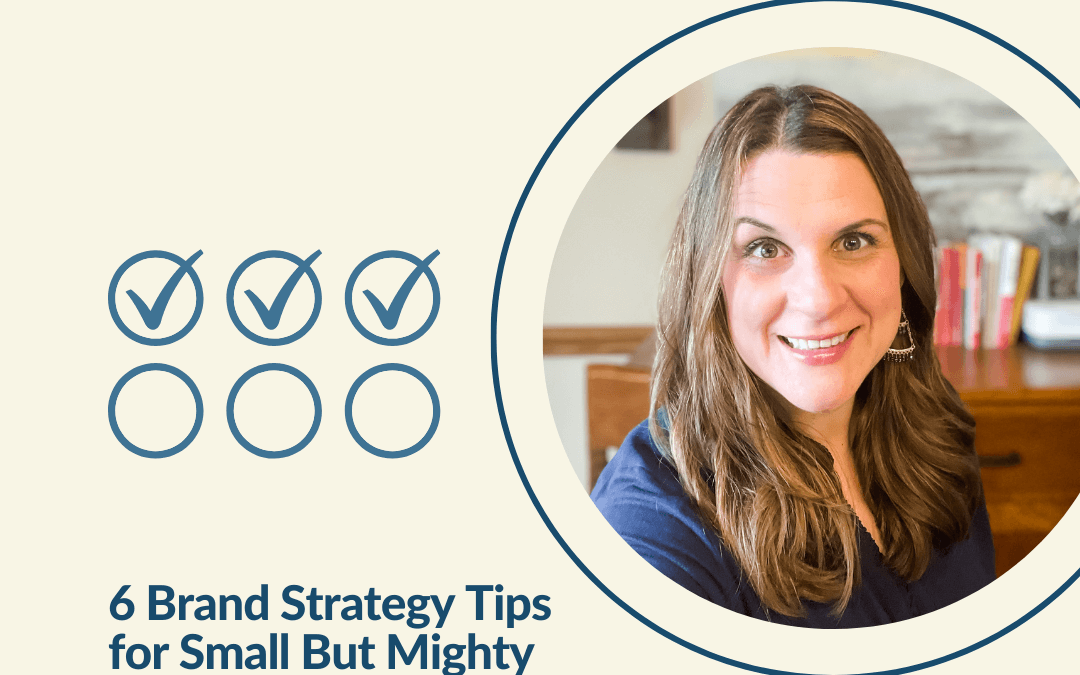Brand strategy work is something that is second nature for big brands, but not as common for small brands. There’s so much to do when you’re wearing all the hats that it can seem like something you’ll get to “next.” While big brands have access to brand managers and agencies, we can help even the score by providing streamlined versions of the concepts they use to focus on the key parts of the process to help you build a brand that stands out no matter who you’re lined up next to.
Today on Episode 107 of the Real Food Brands Marketing Podcast, Host and Food Brand Strategist Katie Mleziva shares a presentation she recently shared with the cohort of a food business accelerator program. This is a two-part series because Katie wants you to be able to really consider the tips she’s sharing and think about how they apply to your food business or farm.
1. Positioning Your Offer (i.e. Brand Positioning)
“It’s not enough to just know in your head what you think is so unique about your brand if you can’t actually articulate it,” Katie says. The question is, how do you meet your ideal consumers’ needs in a way that your competitors can’t or won’t?
Think about the cracker brands Annie’s, Cadia, and Potter’s. They’re all organic brands that might even show up on the same shelf in the same store…but they appeal to different people and different usage occasions. Or take the brands Kia, Volvo, and Tesla—they’re all cars, but their ideal core consumers are very different. It’s important to put this in writing so you have a stake in the ground…your “North Star” to refer back to on a daily basis.
2. Sharing a Story
“People no longer want to be sold to, they value experiences,” Katie says, “food plays a role in people’s health and well-being and emotions so we want to invite them to join your brand story so they, in turn, invite your brand to join them in their daily routines and rituals.” You don’t need to jump into full-blown copy though. Instead, you want to first write a Brand Story Statement that takes your positioning ideas and casts the consumer as the main character and your brand as the guide who helps them overcome a hurdle and win the day.
It needs to go beyond your story or brand history. As Katie says, “your brand history is where you’ve been, but your brand story is where you’re going and where you’re inviting them to go with you together.” While it can be a big, life-changing story, it can also be a small, day-to-day surprise and delight type of story. No matter what, you want some sort of emotion in the story beyond purely functional benefits. It’s too easy for food brands and farms to become interchangeable commodities if there is not an emotional connection beyond the basics.
3. Humanizing the Brand
“For more and more consumers, people like to buy from people and not companies,” Katie says. Not every food business owner wants to step into the limelight to share their face on camera, however, you can still put faces to your brand by featuring your customers, user-generated content, usage ideas, lifestyle photos, the making or growing process—the list is endless if you start to think outside the box.
If you’re thinking through how to apply this to your business, don’t hesitate to reach out and get in touch with Katie here.
Now, let’s go shake up shopping carts!
Quotes:
“Everything we’re doing in brand strategy is about positioning your brand to stand out and working to own a share of your consumer’s minds. But this is not something that small businesses typically do or do well.” – Katie Mleziva
“Brand Strategy can be the thread that runs throughout everything you do and help you make these decisions. We want to go from making a good product to a strong brand. It’s not enough to think you know it if you can’t articulate it.” – Katie Mleziva
“People no longer want to be sold to, they value experiences. We want to invite them to join us, so in turn they invite us to join them in their daily routines.” – Katie Mleziva
In This Episode:
- Why Katie wants to share these Brand Strategy tips with food business owners and farmers.
- The first 3 tips Katie has related to brand positioning, brand story, and humanizing your brand.
- Multiple examples that support each of Katie’s brand strategy tips.
- Why Katie shares stories of small brands, not just big brands
- How you can tell that the seeds that you plant with brand strategy are coming to life.
- What to expect in part 2 of the episode
- Why to get started on your brand strategy BEFORE your next website project, packaging redesign, or sales pitch.
Resources:
- Ep #104: What Is a Brand Positioning Statement?
- Ep #106: How Riemer Family Farm is Growing a Regenerative Brand
- Ep #91: The 3-Step Brand Strategy Streamlined Process
- Ep #83: Understanding the Difference Between Features & Benefits
- The Real Food Brands Podcast Index by Topic
- Download Your Free Brand Strategy Checkup
- Brand Strategy Streamlined Course Details
- Book a 60-minute 1-on-1 Brand Strategy session with Katie
- Connect with Katie on Instagram


